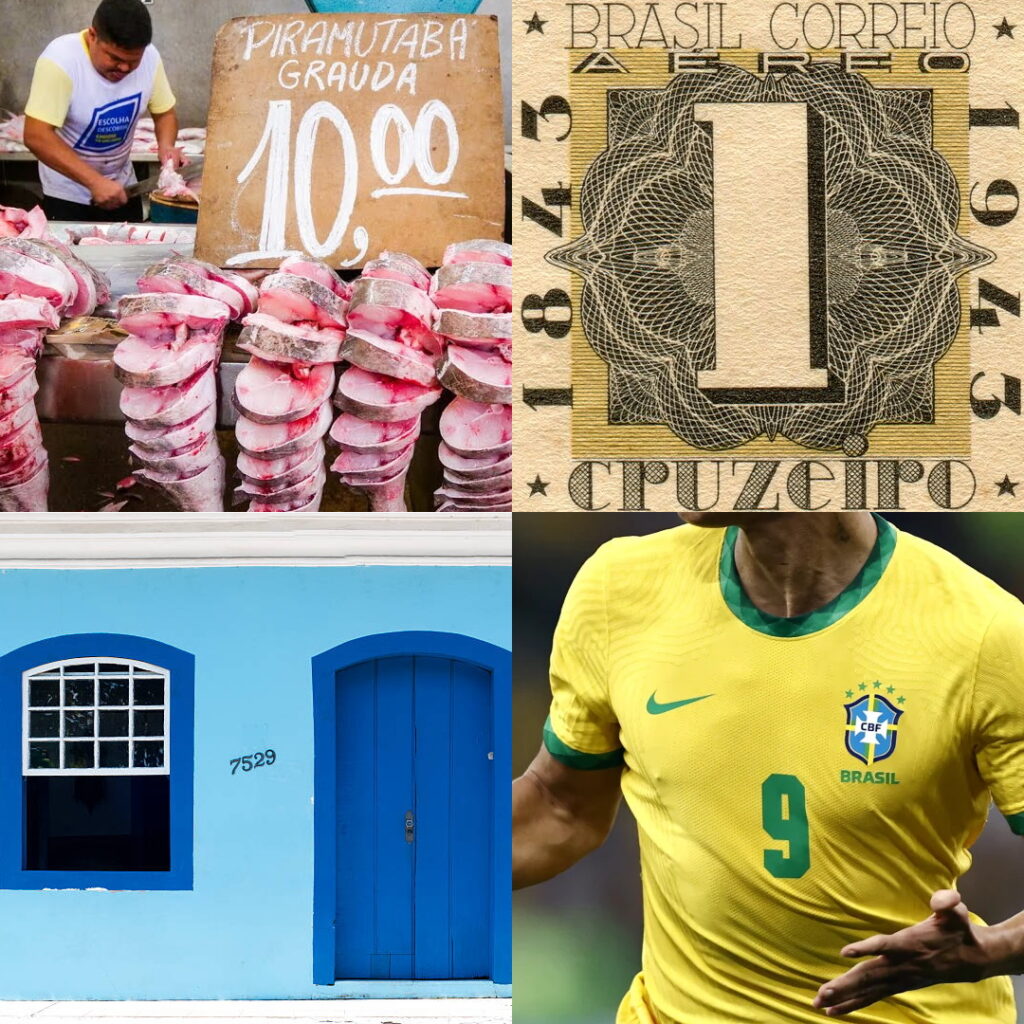This page offers a guide to speaking numbers in Brazilian Portuguese. Numbers in Portuguese are called números.

Numbers 1 to 15
Numbers zero to fifteen are specific words, which are listed in the table below:
| 0 | zero |
| 1 | um(m)/uma(f) |
| 2 | dois(m)/duas(f) |
| 3 | três |
| 4 | quatro |
| 5 | cinco |
| 6 | seis |
| 7 | sete |
| 8 | oito |
| 9 | nove |
| 10 | dez |
| 11 | onze |
| 12 | doze |
| 13 | treze |
| 14 | quatorze |
| 15 | quinze |
Numbers 1 (um/uma) and 2 (dois/duas) have masculine and feminine forms, which need to agree with the gender of the thing that is being counted (e.g. two dogs / dois cachorros, two houses / duas casas).
Um is also used as an indefinite article in Portuguese, playing the role of “a(n)” in English. Click this link for more information about use of articles in Brazilian Portuguese.
Instead of using seis, when saying a sequence of numbers (e.g. a phone number), meia is used. Meia is short for meia dúzia, or half a dozen.
Numbers 16 to 19
The numbers 16 to 19 are formed by combining dez, the single digit number and adding e (and) in the middle, e.g. dezessete (10 and 7).
| 16 | dezesseis |
| 17 | dezessete |
| 18 | dezoito |
| 19 | dezenove |
Numbers 20 to 99
Multiples of ten from forty upwards all end in -enta and all of them except 20 (vinte) have an obvious relationship with their root digit – e.g. 7 (sete) and 70 (setenta).
Multiples of ten and single digits are linked with an e (and), as in quarenta e sete (47).
For all numbers that end in one or two, the correct masculine or feminine form of um/uma or dois/duas should be used (e.g. 21 houses / vinte e uma casas, 32 books / trinta e dois livros)
| 20 | vinte |
| 30 | trinta |
| 40 | quarenta |
| 50 | cinquenta |
| 60 | sessenta |
| 70 | setenta |
| 80 | oitenta |
| 90 | noventa |
‘Cem’ and ‘cento’
Cem is only used when there is exactly one hundred of something, if another number comes after the hundred, cento should be used instead (e.g. cento e um, cento e dois, etc).
Numbers in the hundreds
The numbers 200, 300, etc, have masculine and feminine forms, meaning they must agree with the noun they appear next to. Masculine forms end in -os and feminine forms in -as (e.g. 200 houses / duzentas casas, 200 books / duzentos livros).
These numbers generally follow the pattern of route number + centos(m)/centas(f) (plural of hundred), with the exception of duzentos, trezentos, and quinhentos.
| 200 | duzentos(m)/duzentas(f) |
| 300 | trezentos(m)/trezentas(f) |
| 400 | quatrocentos(m)/quatrocentas(f) |
| 500 | quinhentos(m)/quinhentas(f) |
| 600 | seiscentos(m)/seiscentas(f) |
| 700 | setecentos(m)/setecentas(f) |
| 800 | oitocentos(m)/oitocentas(f) |
| 900 | novecentos(m)/novecentas(f) |
As with multiples of ten, hundred and tens are linked with an e (and) e.g. cento e oitenta e sete (187).
Numbers in the thousands
| 1000 | mil |
Thousands and hundreds are generally not linked with an e (and) e.g. três mil duzentos e oito (3208), unless the number ends with two zeroes e.g. três mil e trezentos (3,300); e is also used to link thousands and single digits e.g. quatro mil e oito (4,008).
Numbers flashcards
Test your understanding of numbers in Brazilian Portuguese using the flashcards below:
Question will appear here
| 👈 Previous page | Next page 👉 |
| Nouns and articles | Family and relationships |
